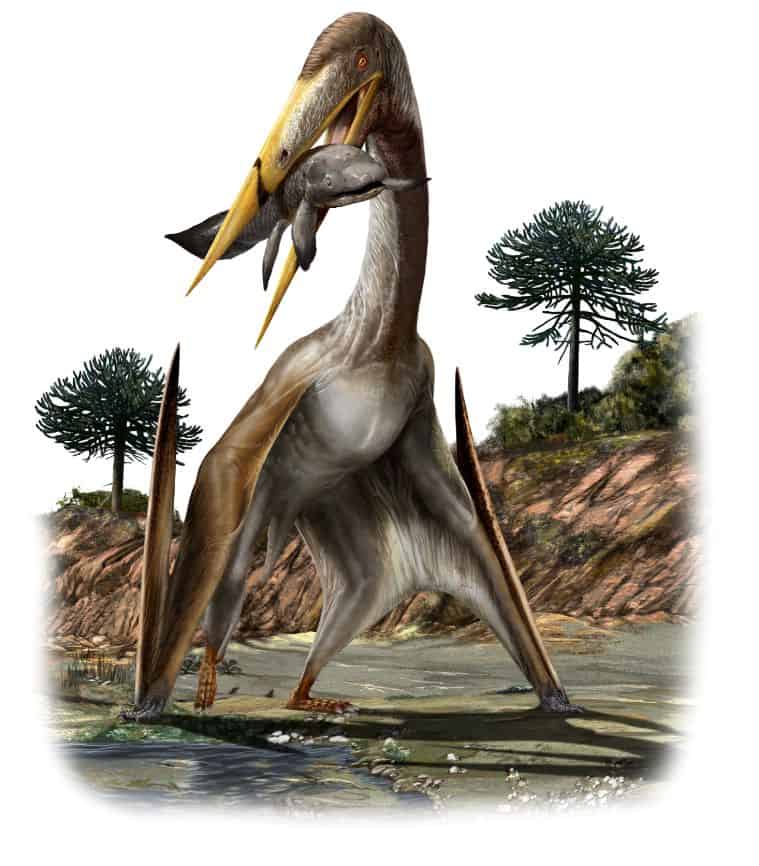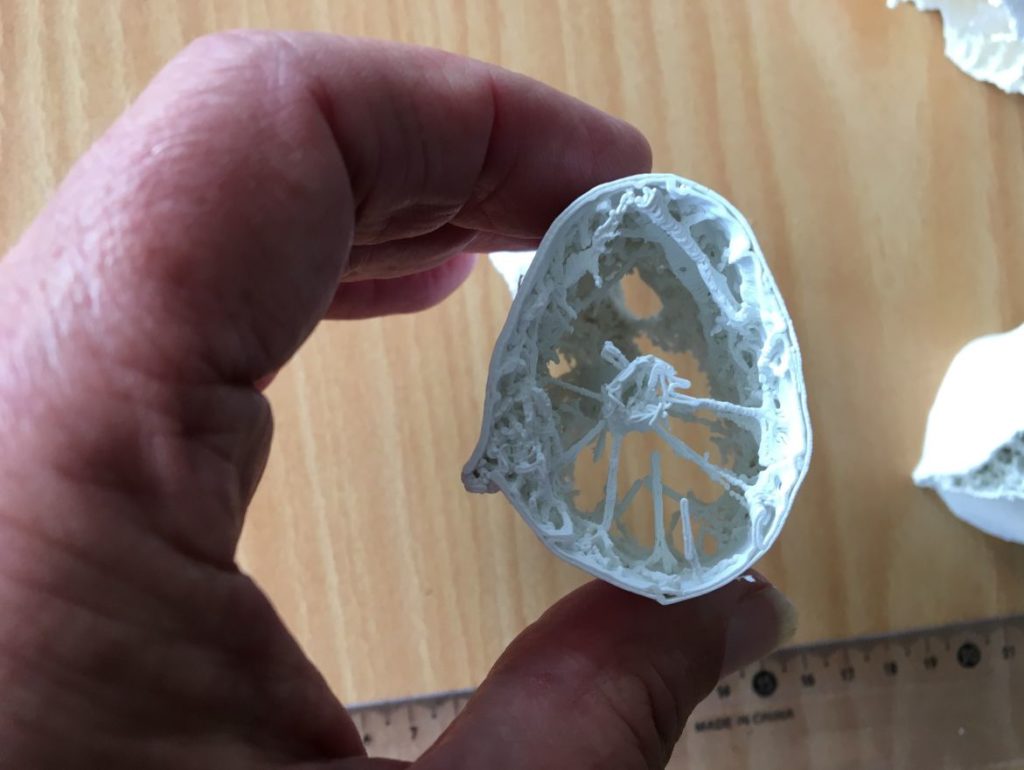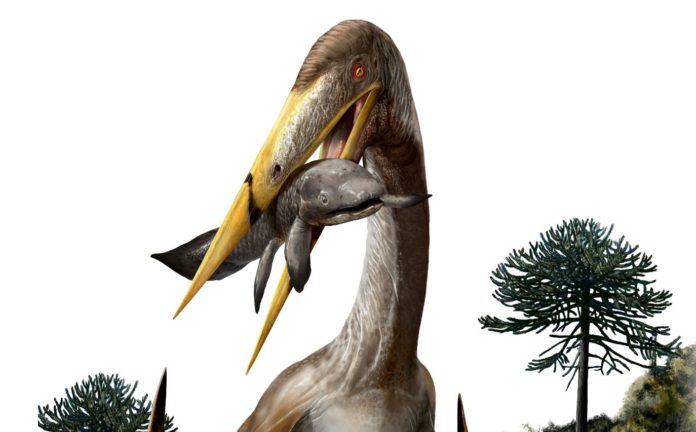How Earth’s first flying vertebrate Pterosaurs managed to fly with a neck longer than a giraffe’s?
They had a wingspan of more than 40 feet – wider than a fighter jet and on the ground, they stood up to 18 feet high – taller than a giraffe.
Some species of the legendary beast are the biggest animals ever to take to the skies.
How they became airborne is one of the enduring mysteries of palaeontology but now CT (computed tomography) scans have revealed the secret.

- Does This Mean We Stopped Being Animal and Started Being Human Due to ‘Copy Paste’ Errors?
- The One Lifestyle Choice That Could Reduce Your Heart Disease Risk By More Than 22%
- Aging: This Is What Happens Inside Your Body Right After Exercise
- Immune-Boosting Drink that Mimics Fasting to Reduce Fat – Scientists ‘Were Surprised’ By New Findings
- Gun Violence in America: What They Don’t Talk About at the Debate
Their ultra-thin vertebrae had a unique structure that boosted strength.
Co-author Professor Dave Martill, of Portsmouth University, said: “One of our most important findings is the arrangement of cross-struts within the vertebral centrum.
“It’s unlike anything seen previously in a vertebra of any animal.”
The neural tube – which goes on to form the brain and spine – was placed centrally.
It was connected to the external wall via a number of spongy rod-like bones called trabeculae.
Prof Martill explained: “These are radially arranged like the spokes of a bicycle wheel – spirally along the length of the vertebra.
“They even cross over like the spokes of a bicycle wheel.”
“Evolution shaped these creatures into awesome, breathtakingly efficient fliers.”
Their jaws – twice the size of T Rex’s – were packed with big sharp teeth. They also had throat pouches similar to a pelican’s for catching fish.
The pterosaur’s slender neck – needed to reduce weight – has baffled experts for decades.
It had to support their bodies mid-air – while allowing them to capture and eat heavy prey.
First author Cariad Williams, a Ph.D. student at Illinois University, said: “These animals have ridiculously long necks.”
In some species, the fifth vertebra from the head is as long as the animal’s body.

She said: “It makes a giraffe look perfectly normal.
“We wanted to know a bit about how this incredibly long neck functioned, as it seems to have very little mobility between each vertebra.”
The findings published in iScience are based on an analysis of a pterosaur dug up in Morocco in 2010.
Named Alanqa saharica, it had a wingspan of 20 feet and lived 95million years ago. Such clear images came as a surprise despite the bones being fossilized in 3-D.
Prof Martill said: “We did not originally CT scan it to learn about the inside.
“We wanted a very detailed image of the outside surface. We could have got this by ordinary surface scanning.
“But we had an opportunity to put some specimens in a CT scanner- and it seemed churlish to turn the offer down.
“We were simply trying to model the degree of movement between all the vertebrae to see how the neck might perform in life.”
- Does This Mean We Stopped Being Animal and Started Being Human Due to ‘Copy Paste’ Errors?
- The One Lifestyle Choice That Could Reduce Your Heart Disease Risk By More Than 22%
- Aging: This Is What Happens Inside Your Body Right After Exercise
- Immune-Boosting Drink that Mimics Fasting to Reduce Fat – Scientists ‘Were Surprised’ By New Findings
- Gun Violence in America: What They Don’t Talk About at the Debate
He went on: “What was utterly remarkable was the internal structure was perfectly preserved.
“As soon as we saw the intricate pattern of radial trabeculae we realized there was something special going on.
“As we looked closer we could see that they were arranged in a helix traveling up and down the vertebral tube and crossing each other like bicycle wheel spokes.”
Experiments showed only 50 of the spoke-like trabeculae doubled the weight their necks could carry without buckling.
It sheds fresh light on how the legendary beasts could capture and carry heavy prey – without breaking their necks.
Prof Martill said: “It appears this structure resolved many concerns about the biomechanics of how these creatures were able to support massive heads – longer than five feet – on necks longer than the modern-day giraffe, all whilst retaining the ability of powered flight.”
Pterosaurs are not related to birds – and are sometimes thought of as evolutionary dead ends.
The latest results reveal them as “fantastically complex and sophisticated,” said Prof Martill.
Their bones and skeletons were marvels of biology – extremely light yet strong and durable.
Pterosaurs stand out as one of evolution’s great success stories.
They first appear in the fossil record during the Triassic 225 million years ago.
They thrived for around 160 million years before being wiped out by wiped out by an asteroid – along with their cousins the dinosaurs.
The researchers now plan to learn more about their flight abilities and feeding habits.
